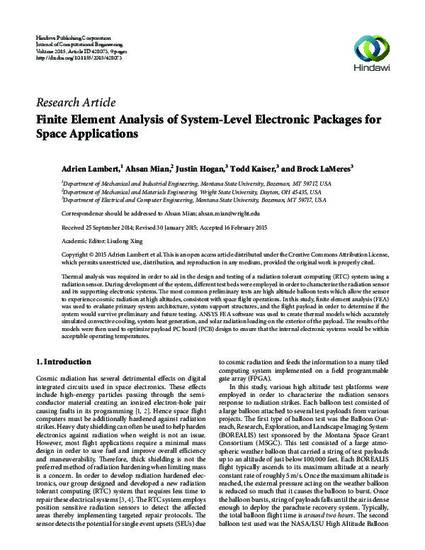
Thermal analysis was required in order to aid in the design and testing of a radiation tolerant computing (RTC) system using a radiation sensor. During development of the system, different test beds were employed in order to characterize the radiation sensor and its supporting electronic systems. The most common preliminary tests are high altitude balloon tests which allow the sensor to experience cosmic radiation at high altitudes, consistent with space flight operations. In this study, finite element analysis (FEA) was used to evaluate primary system architecture, system support structures, and the flight payload in order to determine if the system would survive preliminary and future testing. ANSYS FEA software was used to create thermal models which accurately simulated convective cooling, system heat generation, and solar radiation loading on the exterior of the payload. The results of the models were then used to optimize payload PC board (PCB) design to ensure that the internal electronic systems would be within acceptable operating temperatures.
Available at: http://works.bepress.com/ahsan-mian/29/

Copyright © 2015 Adrien Lambert et al. This is an open access article distributed under the Creative Commons Attribution License, which permits unrestricted use, distribution, and reproduction in any medium, provided the original work is properly cited.